By Keith Pape
Editor’s note: The following is a reprint of an article for iMedia Connection by Keith Pape, VP of social and emerging media at Ayzenberg Group.
Three years ago, the promise of what a comprehensive social media campaign — one that’s proactive rather than reactive — could do for marketing campaigns often fell on deaf ears. As the person who founded the social media practice at my current agency in 2008, I heard my share of, “We’ve got it covered, thanks.” Many companies, especially those with well-known brands or complex products such as tech and video games, had been running online customer service, user forums, or discussion boards for years. As far as they were concerned, their online reps and moderators were covering their so-called “social media needs” just fine.
Oh, how far we’ve come. Behemoths such as Ford, Doritos, Oreo, JetBlue, Pepsi, Comcast, and Dell — the list goes on — have paved the way with how much social media can elevate a brand and remain “always on” for consumers. They’ve had big budgets and big agencies backing them up. But they’ve built the essential building blocks to a comprehensive social marketing program that can apply to brands large and small.
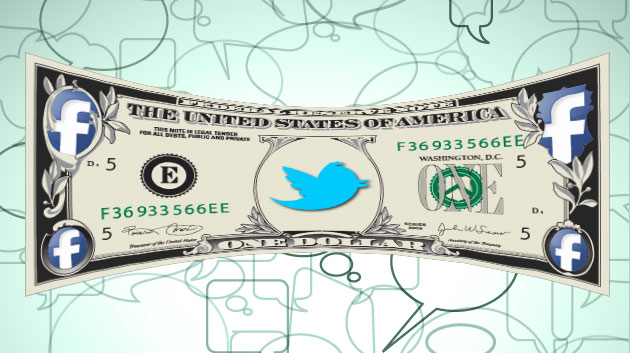
Companies are finally recognizing that, at its root and as a marketing communication strategy, social is about authenticity and relevance. These two pieces of the social media puzzle are the answer to what “always on” means. And, importantly, now there are brands demonstrating that this approach is feasible for products and budgets in categories well outside of major global brands.
When it comes to rivaling the biggest brands in social media, the brands in this article stand out. In highlighting them in this article, we’ll start with their Facebook community size. (There are a lot of social networks, but Facebook still exemplifies the traction brands are able to get on them.) From there, we’ll look at their People Talking About This (PTAT) scores (in terms of the number of unique community members who have taken an action with the page), the brands’ response rates (in terms of the percentage of comments they’ve taken the time to engage with), as well as how quickly they respond. As you’ll see, you don’t need Coca-Cola-sized marketing dollars to be “always on” in social media.
Black Milk Clothing
Facebook community: 450,000
PTAT: 100,000+
Response rate: 64 percent
Average response time: 48 minutes
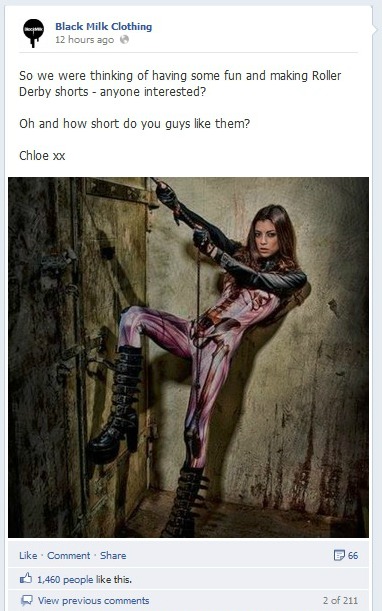
Here is a really fun brand. As a fashion and style brand, Black Milk’s product set is a bit easier to engage with than others, but few brands leverage those benefits quite this well. The brand’s content mix makes sure to get the business at hand done — that is, to generate sales — while also giving its community fun ways to engage and do it in style. The brand even occasionally posts other content that it believes will resonate with its audience.
The below post fits the cadence Black Milk has with its community by creating a product placement, adding a bit of humor, and managing to generate solid engagement. A lot of brands would clamor for 60 shares and 100 comments — not to mention 1,300 “likes” — on something this simple.
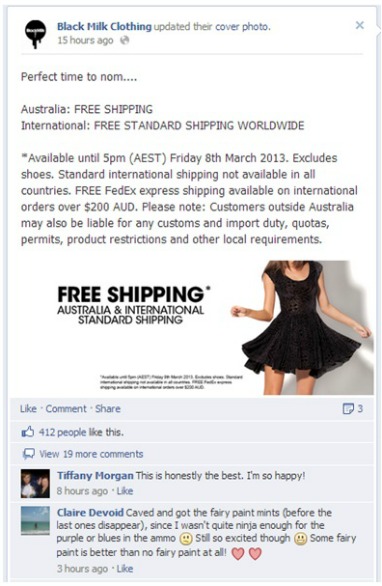
For Black Milk, 450,000 is a solid community size. It’s not a slam dunk — folks start thinking of you as a social mega brand when you cross a million fans — but the company’s PTAT is impressive as a percentage of its total fan base. Looking through the page, you see why. The brand achieves a nice balance of funnel (sales) type posts, but also mixed in with a bit of fun (like great comics).
Woolworths Australia
Facebook community: 450,000
PTAT: 20,000+
Response rate: 85 percent
Average response time: 563 minutes
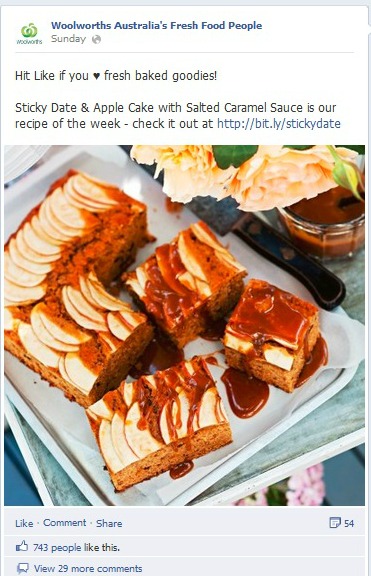
Woolworths Australia should fall into the “Why do I want a relationship on Facebook with my grocery store ” brand category. But it gets solid engagement, and it could be because of how the brand reengages. Not only has it found a way to respond to an astounding 85 percent of the questions asked by its community, but the brand also uses images and enticing questions to create interesting and relevant content.
Now don’t let the eight-hour delay in answering questions fool you. For Woolworths Australia, that is consistency. Looking at the page, you don’t see a lot of complaints about the response time. What you see are good answers, not the same response copied and pasted 10 times. The brand has solid engaging content, and it puts forward offers that meet the needs of different sets of its target audiences.
People don’t buy food in a vacuum; they purchase it to make a meal or even share it. Although Woolworths isn’t in the business of publishing recipes or a cookbook, it provides detailed instructions and videos on how to make popular foods. It has found innovative ways to serve its community’s needs and give its members a reason to participate and hang out.
Redbox
Facebook community: 5 million
PTAT: 36,000+
Response rate: 62 percent
Average response time: 73 minutes
Movie rental company Redbox is a fairly large brand. But despite being well known in its market, it is still one of the smaller players in its industry — and has a huge service component required. Considering that much of the company’s business is out of its control due to its remote distribution model, getting close to the one-hour response time on Facebook engagements is truly amazing.
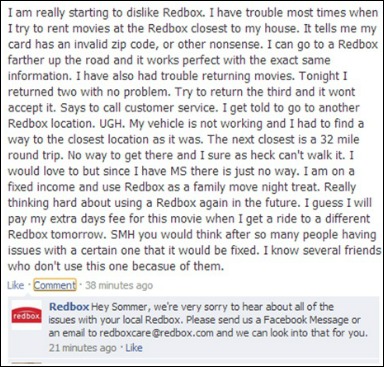
Sales are a serious part of Redbox’s social community offering, but it’s not what you notice first. At first glance, you see a lot of silly fill-in-the-blank questions, movie trivia, and other tactics that make the company’s Facebook page a fun place to visit and participate.
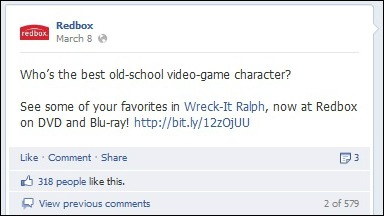
Among the various ways to engage on Facebook, Redbox is the best at using its news feed effectively. The brand produces content that’s developed specifically to consume on the Timeline. Then, there is the viral type of engagement that Redbox uses to make sure users feel compelled to become part of the community when a friend interacts (and Facebook determines it’s worth putting on that person’s news feed). This tactic covers everything you want from your community page: effective customer service, enticing content to keep existing community members engaged, deals to entice the discount demographic, and well-written content that pops up in news feeds due to organic, viral activity. This is what we call mid-size brand nirvana on social.
Wendy’s
Facebook community: 2.9 million
PTAT: 37,000+
Response rate: 17.6 percent
Average response time: 20 minutes
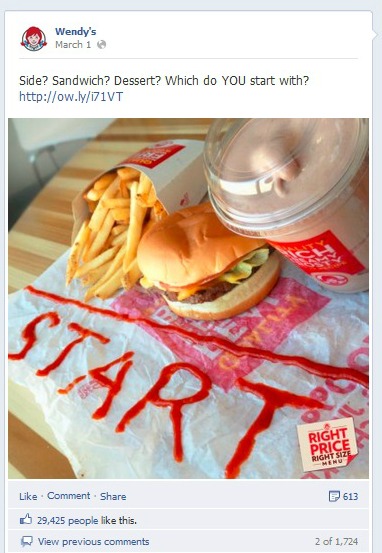
At 2.9 million Facebook fans, Wendy’s sits toward the bottom of the large quick-service restaurant scale, as McDonald’s, Burger King, and Pizza Hut are all several times larger on the network. So how does Wendy’s make up for the smaller physical and virtual footprint It takes care of its community.
With a 20-minute average response time to comments and a 17.6 percent response rate, Wendy’s is there for its consumers not only when there is a problem (although it is definitely there when an issue arises) but also when something like a little accolade is appropriate. This is the core of what “always on” social media is about. The brand’s numbers are always consistent, regardless of the marketing beat or what is going on, whether a crisis, a marketing campaign, global events, etc. Its response remains aggressively consistent to meet the needs of the community.
As with the other examples, Wendy’s isn’t just about customer service. It uses the other elements of a good social media plan in an “always on” theme. The brand consistently varies its content to bring all elements together that drive engagment and allow for commenting and response. The “famous redheads” content shown below is an example of that. It’s not just about being silly or about product shots and discounts — or even being relevant 100 percent of the time. It’s about a well-rounded approach and a holistic effort that drives business goals and, ultimately, an effective campaign that drives value for the business.
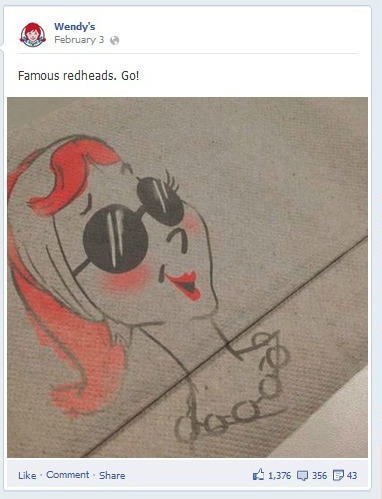
Conclusion
The way brands and companies, large and small, think about social media is vastly different than it was 12 months ago. Social media is like most communication tools. Before we had it, we didn’t know we needed it — let alone understand how important it could be. Once inventions such as the telephone, radio, television, and the internet entered our daily life, they became absolute necessities. As they proliferated, they changed the face of society.
Considering that advertising is a form of communication, reliant on the media of the time, each new tool has had the same effect on it. What worked for 50 years in advertising and marketing has changed drastically with the internet just over the past 10 to 15 years. The effect of social media over the last five years might have been even more dramatic. Yet one of the biggest shifts has taken shape even more recently, as social network use has moved beyond the computer screen. It’s now part of people’s lives wherever there’s a smartphone or tablet screen nearby. That’s practically everywhere. The internet and digital advertising promised that the disparity in awareness, reach, and frequency that those with massive television advertising budgets could generate versus those without would shrink dramatically. That scenario has arrived.
The examples in this article demonstrate that any brand can find an appropriate version of “always on” social media for its community and product style. Some of these products require very fast response due to what they offer their customers, whereas others are consistent but not instantaneous. All do a fantastic job of engaging and being relevant through a combination of content and response.
Engagements such as accolades, conversation, and other responses also need to be evaluated for viral action, sentiment, and other KPIs critical to business development through social marketing. The best programs start with a foundation of authenticity, relevance, and “always on” responses. That’s what puts a brand on people’s social media radars. The follow-through in many cases is a smart, effective strategy for paid programs designed to grow both business and brands through social networks. Paid programs through social, whether comprehensive or finely targeted, are becoming important parts of the mix. But tackling the full details of a paid, owned, and earned plan — including calculating earned media value — is fodder for another article.
Source: iMedia Connection.

